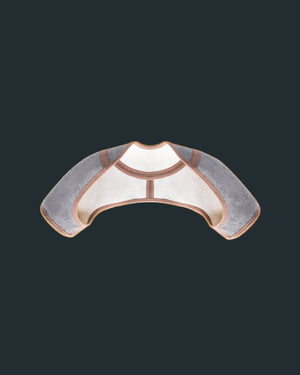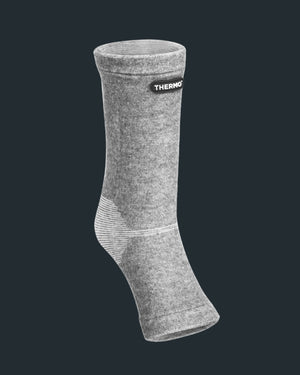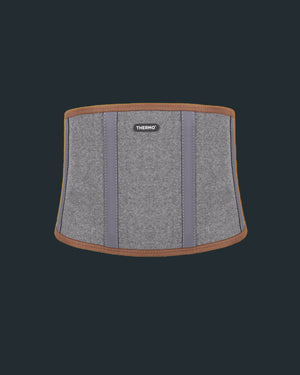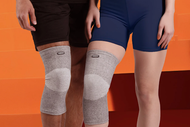Wrist sprains are common wrist injuries that may result at any time. They cause pain and occasional swelling and may restrict how you use the affected hand. This post explains a wrist sprain, how...
Wrist sprains are common wrist injuries that may result at any time. They cause pain and occasional swelling and may restrict how you use the affected hand.
This post explains a wrist sprain, how to differentiate it from other wrist injuries, and provides a step-by-step guide on what to do right after the injury.
Let’s explore how to heal a sprained wrist fast.
What Is a Wrist Sprain?
Before anything, you need to understand your injury to avoid making it worse by accident. When there’s a pain in your wrist, you can either have a sprain, a strain, or a fracture. So, what’s the difference between each?
A sprain occurs when there’s injury to your ligaments, which are small bands of tissue that connect your bones.
A strain happens when there’s an injury to your tendons. These bands of tissue connect your muscles to your bones, and they’re less likely to be injured compared to the ligaments.
The strain pain and symptoms are similar to that of a sprain. However, the pain is located more toward the base of the thumb rather than the wrist itself.
Lastly, fractures which are essentially broken bones. The severe pain and inability to move the wrist make it easy to distinguish a fracture from other injuries.
Causes of Wrist Sprains
Wrist sprains can be caused by various reasons like:
How Does a Sprained Wrist Look and Feel Like?
The symptoms of the sprain almost always include pain and swelling.

There’s also an inability to move the wrist properly. The severity of a sprained wrist symptoms depends on the extent of the injury, as we have three grades of sprain:
- Sprain Grade I (mild sprain): Ligaments of the injured wrist are overstretched but mostly intact. There’s difficulty moving the wrist, and it may not be possible to do a full range of motion.
- Sprain Grade II (moderate sprain): There’s a partial tear in the ligaments. The swelling is markedly more prominent, the pain is more than the mild wrist sprain, and the joint may not feel stable.
- Sprain Grade III (severe sprain): Severe wrist sprains cause a severe sprain due to the complete tear of the ligament, leading to severe pain, swelling, and inability to move the wrist. The wrist pain can be severe enough to mimic that of a fracture and often requires an X-ray to tell the extent of the injury.
How to Heal Quickly From a Sprained Wrist
There’s no such thing as “healing quickly” from an injury. Our bodies require a minimum time to heal from different grades of injuries. No matter what we do, we can’t go beyond that minimum time and expect the injury to be fully healed.
What we can do, however, is ensure that our bodies' healing is unobstructed. That is why people who take optimum care and heal during the actual healing time may think that they “hastened” the healing process.
That being said, here’s what you need to do to ensure optimum healing, starting from the moment of injury:
Step 1: Apply Cold Packs
It’s common knowledge that warm packs improve the blood supply to the affected joint. However, improved blood supply isn’t what you want right now, as it might increase swelling.
Instead, you should apply cold packs right after the injury. They won’t stop the swelling completely, but they’ll reduce it considerably.
Note: Don’t apply ice directly on the skin to avoid freezing it. Always use a pack.
Step 2: Wrap Your Wrist
You’re not sure yet how bad your injury is, and one of the primary concerns is the instability of your wrist after the injury. As such, you should wrap it properly to provide stability.
Start by choosing the proper wrap. In this case, you require wrist support or thermal wrist wraps. Position the wrist in a neutral state and wrap the bandage around the wrist two or three times.
The appropriate wrap should not be too tight or too loose. Follow by using the figure eight technique to prevent the sprain from worsening.
Once you’re finished, secure the end of the wrap using the Velcro that comes with the wrap. If you don’t have that, clips should be enough.
For more comprehensive information, you can read our guide on how to wrap a wrist the right way.
Step 3: Visit a Physician
Even if the pain isn’t too severe, you should visit a physician to help you detect the extent of the injury and advise the appropriate treatment.
In most cases, the treatment involves a 4-step protocol called RICE. It stands for:
- Rest: This involves resting your wrist and not applying weight to it.
- Ice: Apply cold packs in the first 2-3 days to reduce swelling of the wrist as much as possible.
- Compression: Suitable degrees of compression (which are typically achieved by wrapping or compression garments) provide enough compression to keep the joint stable. For lighter sprains, non-compressive sleeves do the trick.
- Elevation: Keep the affected joint elevated to prevent excessive blood flow to it, which can lead to a congested sensation and increased swelling.
Depending on the extent of your injury, the physician may prescribe painkillers, anti-inflammatory medications, and recovery sleeves/braces to help your wrist heal.

Follow their instructions carefully to get the fastest possible healing.
Additional Tips to Help Heal a Sprained Wrist
In addition to following the doctor’s instructions, here are some extra tips to help get your wrist up to speed:
Physical Therapy
Any injury that involves a highly mobile tissue (tendons or ligaments) in the body often heals better with physical therapy. Make sure to go through all required therapy sessions for the best possible healing.
Avoid Stress
According to a 2009 study, stress can slow down your healing, in addition to all the other negative effects it has. Another more recent 2012 study confirms the same.
As such, you should try to eliminate or at least reduce stressful situations during recovery to get through it as fast as possible.
Go for Passive Healing
Utilizing recovery garments while resting is a good way of improving your healing as you go on with your regular tasks. Such garments are effectively warm packs that improve blood supply to the affected ligament, hastening its healing.
An example of a recovery garment is the Thermo™ Lite Recovery Wrist Sleeve. This sleeve utilizes Black Diamond to reduce pain by up to 62%. It also has antibacterial effects and is made from a breathable, moisture-wicking fabric, making it comfortable to wear.
Note: It’s recommended not to wear such garments in the first couple of days as the increased blood supply early on can increase the swelling. Always consult your physician before wearing any sleeves or braces.
FAQs
How Long Does It Take to Heal From a Wrist Sprain?
Depending on the extent of the injury, a sprained wrist may take anywhere between 2 and 10 weeks to heal.
Are There Any Precautions I Should Know During Treatment?
Yes, for starters, you shouldn’t apply any weight to your wrist, especially if the ligaments in your wrist are torn.
You should also improve the blood supply to the injured wrist by using warm packs of recovery wear.
What if the Sprain Doesn’t Get Better After Doing At-Home Treatments (Like RICE)?
If the pain and symptoms persist without any relief for four weeks, you must visit a physician. They will often require X-rays or MRIs to determine the cause of the delayed healing.
Final Words
Wrist sprains can make your life a lot harder, especially if you don’t follow the proper protocol to heal it properly.
Fortunately, the process is simple. Apply cold packs on the injury, wrap it properly, and go to your physician.
Follow that with one of the best natural recovery methods yet: Thermo Recovery Wear. In addition to the wrists, there are sleeves for every major joint in the body, including knees, elbows, ankles, shoulders, and waists. Browse our storefront for more information.
Sources
- How Physical Therapy Accelerates Healing | Advanced Physicians
- ASTM E2149: 2020 – Standard Test Method for Determining the Antimicrobial Activity | Microbe-Investigations
- Stress and Wound Healing | NCBI
- Sprained Wrist | Cleveland Clinic
- Wrist Sprain | WebMD
- Healing a Sprained Wrist | Verywell Health
- Wrist Sprain: Care Instructions | My Health Alberta






